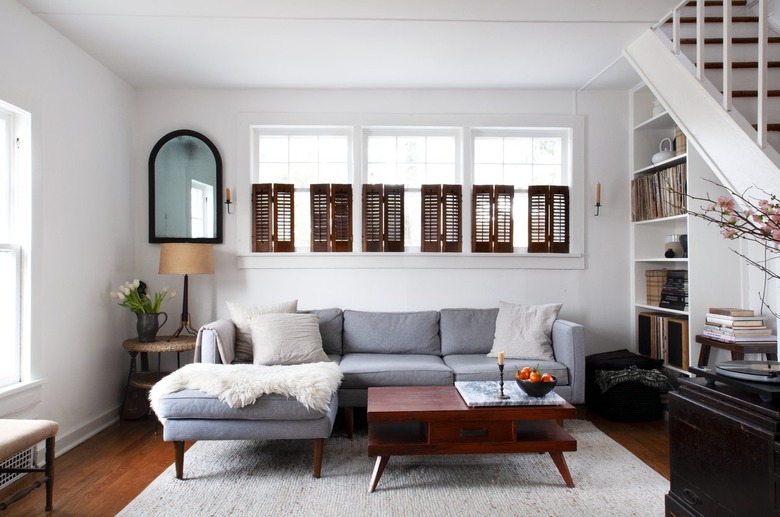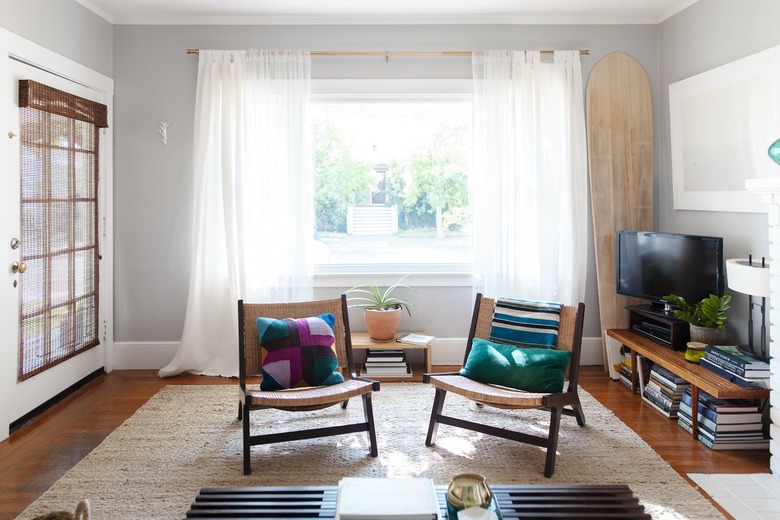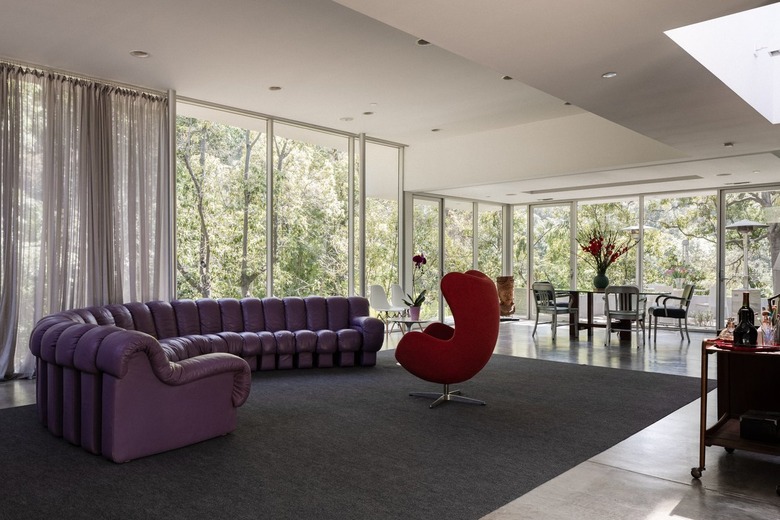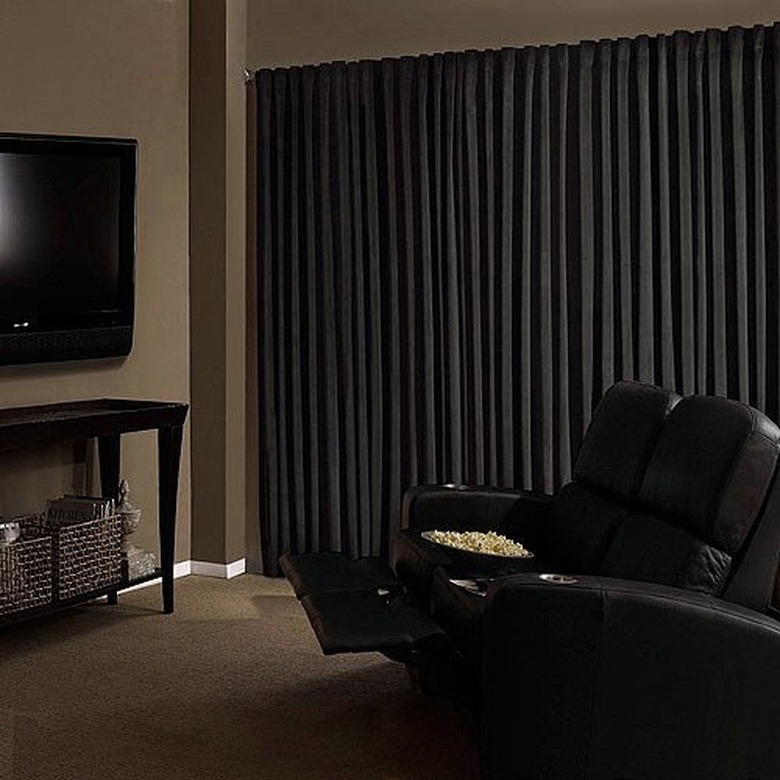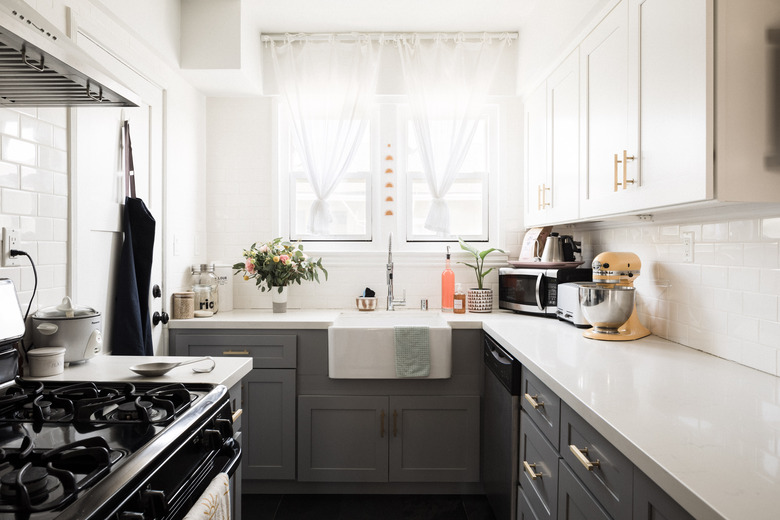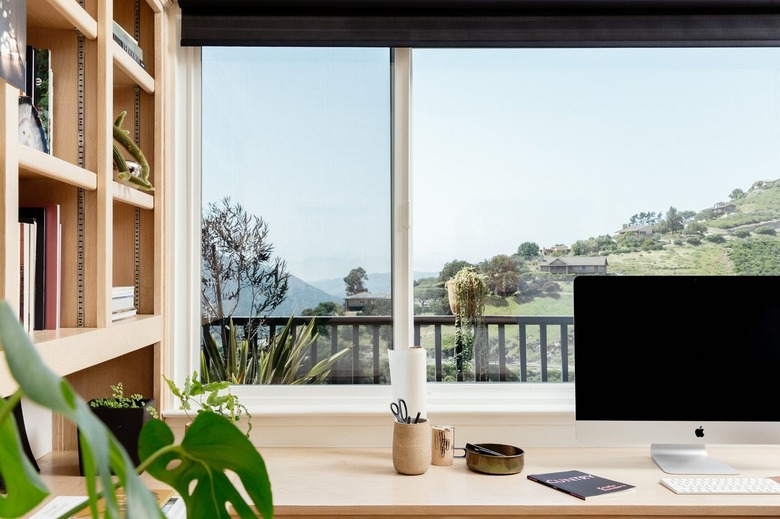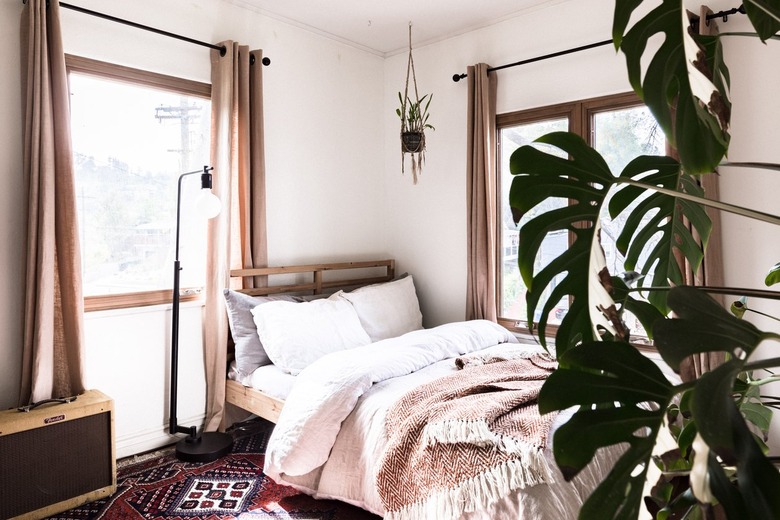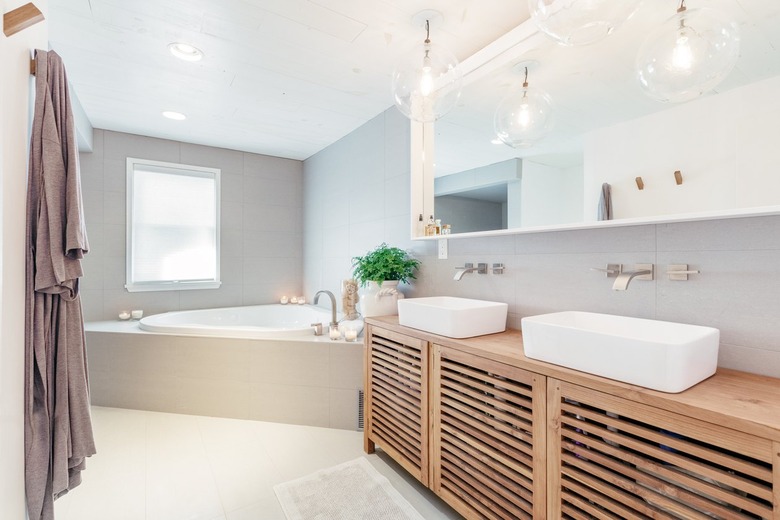How To Choose The Best Window Treatments For Every Room In The House
Your home needs new window treatments, but where do you start? With so many types of window treatments available — cornices, wood blinds, Roman shades — the selection process can be overwhelming. Looking at the form and function of each type compared to what you need for the room can help narrow down the field.
Factors in Choosing Window Treatments
Factors in Choosing Window Treatments
From functionality to appearance, several factors go into choosing window treatments. Consider how you use each room to determine which of these elements are relevant.
Window Treatment Aesthetics
When choosing your window treatments, style is probably one of the first things you consider. Windows take up a lot of your exterior walls, so the window treatments can make a major impact on the room's design. Consider the overall style, colors, and design elements to choose coordinating window treatments. In a formal space, ornate drapes fit the aesthetics, while Roman shades or wood blinds are often a better match for a casual or minimalist look.
Neutral tones are popular for window treatments because they work well with other home decor pieces. If you want a pop of color, drapes and curtains come in a range of colors and patterns. Pick a shade that works with other pieces if you go the colorful route. If you're unsure of what to choose, an interior designer can assess your decor and suggest window treatment ideas.
Budget for Window Treatments
Knowing your budget before shopping helps you limit your search options. Window treatments range from inexpensive off-the-shelf blinds in standard sizes to high-end, custom-made window coverings with a high price tag.
Determine your total budget for window treatments. Then, count how many windows you plan to cover. This helps you allocate money and narrow down the search. You might decide to spend a little more on your living room and other shared spaces where more people will see them versus your primary bedroom where only you will be looking at them.
Light Filtration and Control
Window treatments range from sheer curtains that barely filter the light to blackout shades that create cavelike darkness that's perfect for sleeping. The opacity you choose depends on the use of the room. Choosing window treatments that block sunlight helps keep your room cooler and darker.
Common light control levels include:
- Sheer: Offering the brightest room option, the fabric is lightweight and doesn't completely block the view so that you can see out your window even when the covering is closed. However, you get almost no privacy with this type. You can, however, pair it with another layer for more flexibility.
- Light filtering: Slightly more opaque than sheer, the light-filtering option typically blocks the view but still allows you to see silhouettes. It's considered a moderate light control option that offers a good mix of privacy and light for common areas, like living rooms.
- Room darkening: This option falls between light filtering and blackout, giving you a high amount of privacy without total darkness. They still let a small amount of light through, but they keep the room dark enough that you should sleep comfortably.
- Blackout: A blackout window treatment is designed to block all light from the room, but some light can filter in around the edges of the window coverings if you don't install them well. They offer the highest level of privacy and insulation, making them ideal for bedrooms or nurseries. They also work well in theater rooms where total darkness is a bonus.
Opening Movement and Method
Window coverings can open up and down, to the side, or by tilting. Roman shades, roller shades, pleated shades, and cellular shades are options that move up and down to control the light. Curtains, drapes, and vertical blinds move to the side when you want more light. Certain types of blinds, such as wood and metal blinds, tilt to let in light, or you can raise them up and down.
The opening mechanism is also a consideration. You can choose between corded and cordless blinds that move up and down. With cordless models, you usually push up from the bottom to open them and pull down to close them. Tilting blinds often use a wand that rotates to open and close them.
How Much It Insulates
You might not think about window coverings when you're considering insulation for your home, but they can add an insulating layer on your windows. Since your windows are often a big area of heat and cold transfer, this can make a difference in how your room feels. Buying thermal window coverings that help insulate the windows can make your room stay at a comfortable temperature and reduce how much you have to run your HVAC system, saving you money.
Cellular shades are often a solid choice if you're looking for energy efficiency. The cell pockets on the shades trap air to work as an insulator. Lined drapes can also have an insulating effect. If you're on the hunt specifically for these types of window treatments, look for drapes that say they're energy efficient or thermal.
View From the Outside
Another factor when selecting window treatments is the view from outside. If you have a homeowners' association ruling your neighborhood, check the covenants to see if there is a section on window treatments. Strict HOA communities pride themselves on a consistent look from one home to the next. A popular request from HOAs is installing window coverings that are white on the exterior side.
Even if you're free of HOA restrictions, you still may want to consider how your window treatments look from the street or sidewalk. Having a consistent look, especially on the windows facing the street, can improve curb appeal. White is a safe, neutral option, but wood tones also offer a neutral appeal. If every window has a different type of covering, it can be very noticeable and distracting.
Window Treatment Safety
Window treatments with cords are a common home safety hazard due to the risk of strangulation. Stick with cordless options if you have kids or pets. Not only do they remove the risk of strangulation but they also give your windows a sleek, neat look and eliminate the tangling that can occur with cords.
Ease of Care
Your window treatments are a magnet for dust, so occasional cleaning keeps them at their best. Consider the ease of cleaning for the options you're considering. If you want curtains or drapery panels, review the care instructions to see if you can toss them in the washing machine or if they need to be dry cleaned. If you prefer blinds, faux wood is a durable material that can handle moisture better than real wood, which makes them easier to clean.
Special Door Considerations
Choosing window treatments for sliding doors takes a little more consideration since you need to access the door frequently. A common solution is to install vertical blinds because they slide to the side easily when you want to use your door. You can also rotate the slats to let in some light without opening the blinds on sliding glass doors.
Room-by-Room Window Treatment Guide
Room-by-Room Window Treatment Guide
The best window treatments for each room tackle the special concerns for that area. For example, in common spaces, you might want lots of natural light to make them feel warm and welcoming. In bedrooms and bathrooms, you need privacy.
Living Room Window Treatments
Living room or family room window treatments are a little more flexible than other spaces. Privacy isn't as much of an issue, although you might want some thicker window coverings for nighttime.
The primary focus with living room options is the look since it's a space guests will see. Drape panels are often used in the living room to add texture and color. Layering them with sheers lets you enjoy a bright, sunny living room during the day with more privacy at night. This option works well on large windows in your living room since blinds or shades for large windows can be expensive and difficult to use.
For a casual living room, various types of shades are a suitable option. Cellular, Roman, and roller shades open and close easily to adjust to your lighting preferences. Wood blinds add warmth and texture to your living room. Add curtain panels or a window valance on a curtain rod to soften the look of blinds if desired.
Home Theater Window Treatments
You chose the perfect recliners and screen with a cutting-edge projector for your theater room, but have you thought about the window treatments? Even a thin stream of natural light makes the movie theater feeling disappear and can cause a glare on the screen. Go with blackout curtains or layered window coverings that block all light for the best at-home movie experience.
Kitchen Window Treatments
Cook up a beautiful style with ideal kitchen window treatments that complement the space and factor in the unique concerns of a cooking space. Avoid long, billowy curtains in the kitchen, especially near your stove where they can become a fire hazard. Drapes can also get in the way on windows above sinks or countertops.
Roman or woven shades offer a functional option in kitchens along with a little texture. If you like the look of curtains, short, cafe-style curtains are an option as long as they're not near the stove. Pick something that's easy to wash or easy to wipe with a damp cloth since kitchen window coverings can get splattered with food or grease. Aluminum or faux wood blinds and vinyl roller shades are both durable and washable.
Dining Room Window Treatments
Privacy isn't much of an issue in the dining room, and you don't have the concerns of open flames like you do in the kitchen, so you have more flexibility in the type of window treatments you choose. If your dining room is open to the kitchen or living room, continuing the same window treatments or having them tie together in some way creates a cohesive look. Otherwise, choose drapes, shades, or blinds in your preferred light-filtration level with a style that matches the dining room aesthetics, from minimalist to formal.
Home Office Window Treatments
Consider your preferred working style when choosing window treatments for a home office. If you like natural light, sheers can block the view slightly to minimize distractions while keeping the space bright. Wood blinds also work well because you can position the slats to let in light while blocking the view to help you focus on your work instead of what's going on outside your window.
Bedroom Window Treatments
Your bedroom is your retreat where you want to relax and sleep soundly. It's also an area where privacy is a big concern. Those factors make blackout curtains or blinds that are room-darkening a popular choice for bedroom window treatment options. Layering drapes is also a good solution. In addition to creating a dark sleeping environment, these lined window coverings help insulate your room to keep it at a comfortable temperature for improved sleep.
Bathroom Window Treatments
All those steamy showers and long bubble baths you take to ease away the day's stress bump up the humidity in your bathroom. Choosing the wrong kind of material can cut short the life of your window coverings. For example, wood blinds can warp or bow due to the moisture. Faux wood blinds or water-resistant window covering materials, however, are a good choice in bathrooms. Roller shades are an option, but vinyl is usually better than fabric because the fabric can grow mold or mildew in a humid bathroom.
